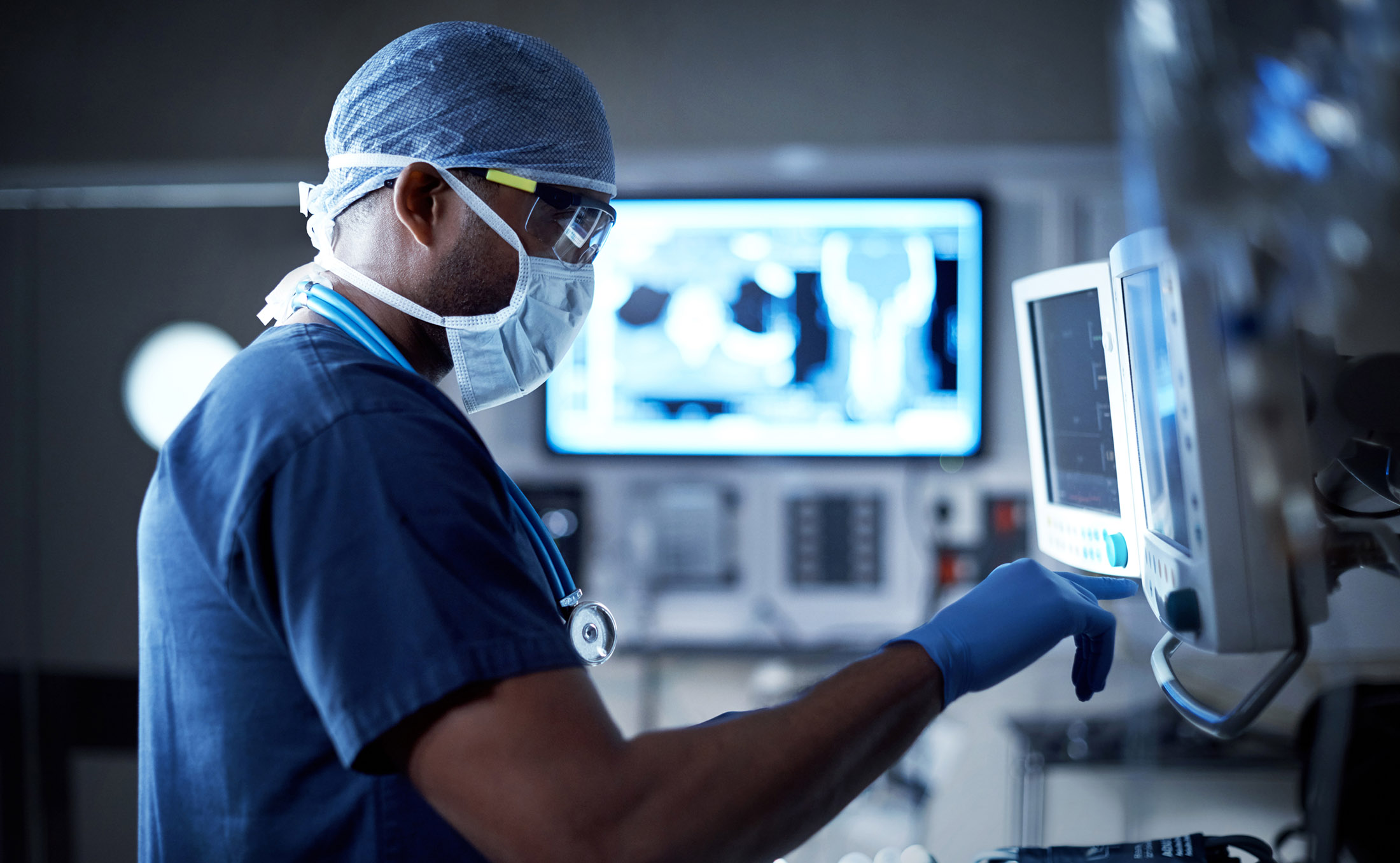Sussex Premier Health, Hastings: Important update for patients with upcoming appointments
Sussex Premier Health, Hastings: Important update for patients with upcoming appointments
Treatment to relieve pain from compressed nerves in your spine

Different surgical procedures to remove or repair worn or damaged bones (vertebrae) or discs in your spine. Back surgery may also be used to relieve pain due to pressure on nerves (sciatica).
The type of surgery recommended depends on the cause of your back pain.
You will have a formal consultation with your Consultant Orthopaedic Surgeon. During this time, you will be able to explain your medical history symptoms and raise any concerns that you might have.
We will also discuss with you whether any further diagnostic tests such as scans or blood tests are needed. Any additional costs will be discussed before further tests are carried out.

On the day of your operation, our ward staff will show you to your own private room. We’ll do all we can to make sure you’re comfortable while you’re with us.
Your private room will have an en-suite bathroom and TV and Wi-Fi facilities.
Your back surgery will be performed by your orthopaedic surgeon, but you’ll also be seen by an anaesthetist to administer anaesthetic during the operation.
You’ll have a general anaesthetic, so you’ll be asleep and won’t feel anything during your operation.
Your operation will take at least an hour but may take much longer if you need a more complex procedure.
You may feel discomfort following your procedure, but our nursing team will make sure you have pain relief medication to help manage this. They’ll also be able to advise you on over-the-counter pain relief you can use while at home.
Physiotherapy also plays an important role in your recovery so we have a dedicated physiotherapy team who can provide you with tailored exercises to help you get the most from your operation.
The average hospital stay is one to four days.
Once you’re ready to be discharged from hospital, you’ll need to arrange for a friend or family member to take you home as you won’t be able to drive.
For information on your recovery time, please see our patient information sections below.
Back surgery recovery time
How quickly you recover from your surgery depends on how fit you were before and on the type of operation you have. After your surgery, you can expect to be in hospital recovering for one to four days.
Spinal (or lumbar) decompression surgery
It will usually take four to six weeks for you to return to your normal activities.
Discectomy recovery time
It will usually take six to eight weeks to return to your normal activities.
Laminectomy recovery time
It will usually take four to six weeks to return to your normal activities. If you have spinal fusion surgery alongside a laminectomy, your recovery may take longer.
Spinal fusion recovery time
It usually takes four to six weeks to return to desk-based work and around three months to return to more physical activities.
Vertebroplasty or kyphoplasty recovery time
You can usually return to your normal activities a day after your vertebroplasty or kyphoplasty. However, it is recommended that you avoid intense exercise and heavy lifting for several weeks.
Driving after surgery
You may be able to drive again as soon as two weeks after your surgery but you’ll need to check with your insurance policy first.
Returning to work
You’ll be able to return to desk-based work around four to six weeks after your surgery. However, if your job involves a lot of driving or heavy lifting, you may need to allow three months for recovery. You can also expect to return to your usual activities after two to three months.
Even after you’ve left hospital, we’re still here when you need us.
If you have any questions or concerns about your recovery, you can call and speak to a member of the nursing team at any time, please call 01424 757459.
Most people have back surgery without complications but all surgery carries some risks, which your consultant will talk through with you before you go ahead.
If you have a vertebroplasty or kyphoplasty, you may develop a reaction to the bone cement used or it may leak inside your body.
During your surgery, certain tissues may become damaged such as your:
Other complications include:
You should call a doctor right away if you experience any of the following symptoms after your back surgery:
There are many different types of back surgery and your consultant will recommend the one that will be best for you, depending on your condition. In some cases, more than one type of surgery will be performed in the same operation.
Types of back surgery
The most frequently used operations include:
Spinal (or lumbar) decompression surgery
Lumbar decompression surgery is used to treat spinal stenosis, cauda equina syndrome, slipped disc, metastatic spinal cord compression or a spinal tumour, and spinal injury. The main types are discectomy, laminectomy and spinal fusion.
Discectomy
A discectomy means the surgical removal of a whole or part of a spinal disc.
A disc is a fluid-filled cushion of tissue that sits between each vertebra and acts as a shock absorber. If it’s damaged, fluid can leak out and put pressure on your spinal cord and surrounding nerves — this is a slipped disc and is a common reason for having a discectomy.
During the procedure, your surgeon will make a small cut over the affected area of your spine and remove any parts of the damaged disc that are putting pressure on your nerves. Most of the disc will be intact and it will still be functional.
There are two types of discectomy:
Laminectomy
Your surgeon makes a cut into your back over the affected vertebrae and pushes aside the muscles as needed. They then remove the back part of one or more of your vertebrae, called the lamina, to relieve pressure on the spinal cord. This pressure is often a result of bony overgrowths in the spinal canal, which narrows the space in your spinal cord. It commonly occurs as you age.
The size of the cut made into your back will depend on the condition causing your back pain and the size of your body. In some cases, smaller cuts can be made and the procedure’s performed using a special surgical microscope.
Your doctor may recommend laminectomy if you have spinal stenosis, where the spinal canal is narrowed through wear and tear, or if previous treatments for your back pain, such as medication and physiotherapy have failed and your symptoms are worsening. Laminectomy is also recommended if you find standing or walking difficult, or if you’re experiencing a loss of control of your bladder or bowel.
Spinal fusion
There are three different ways your surgeon can approach this procedure. They can access your spine by making a cut into the front of your body, your side or your back. They will take a piece of bone from elsewhere in your body (usually your hip) to insert between two vertebrae to strengthen them and prevent painful movement. Alternatively, they may use a bone graft, which can be made from demineralised bone matrices (DBMs), bone morphogenetic proteins (BMPs) and synthetic bones.
You may have this surgery after a break or fracture, to help fix scoliosis, or if one of your vertebrae is displaced and is causing pain (spondylolisthesis).
Vertebroplasty or kyphoplasty
Both are similar types of procedures where bone cement is injected into the spine to repair the damage, often caused by osteoporosis. In kyphoplasty, a small balloon is inserted into the affected area and expanded to make space for the cement.
Foraminotomy
A procedure to relieve pressure and pain caused by vertebrae compressing on a nerve where it exits the spinal cord. Your surgeon will make a cut in your back and remove part of your vertebrae to open up space where the nerve exits the spinal cord.
Interlaminar implant
In this procedure, a device is inserted between two vertebrae to ease pressure on your spinal nerves.
Disc replacement
This is where a damaged disc is replaced with an artificial one. The damaged disc can be partially or fully removed. The new disc is designed to act in the same way as a healthy disc, allowing pain-free movement between your vertebrae.
Your consultant will discuss your options and recommend a treatment tailored to your diagnosis.
Your surgery will be performed by your consultant surgeon.
Speak to a member of our team